There are so many delicious fruit in Trinidad and Tobago that are exported abroad, but there is nothing like eating them where they grew.
We’re talking about a country of two islands, Trinidad and Tobago. It is a gorgeous Caribbean country off the coast of Venezuela.
While it is most known for its legendary Carnival, there’s no reason not visit the islands all year round.
What I love about Caribbean fruit, beside being so delicious, is that they share the history of colonization, slavery and immigration.
Most fruit around the world aren’t native, but landed with people arriving to a new country.
Many Trinidadian fruit exist because of the from the indigenous Arawak from northern South America, slaves from Africa (emancipation did not happen until 1838) and indentured labourers from Asia.
And Trinidad and Tobago were first colonized by the Spanish who killed most of the Arawak people.
The Spanish ceded Trinidad and Tobago to the English and the country didn’t gain independence until 1962.
Today Trinidad and Tobago has such a strong food culture and identity that draws people in.
This tropical paradise is also home to some of the best fruits you’ll ever taste in your life and here are 25 of my favorite.
‘FRUIT IN TRINIDAD
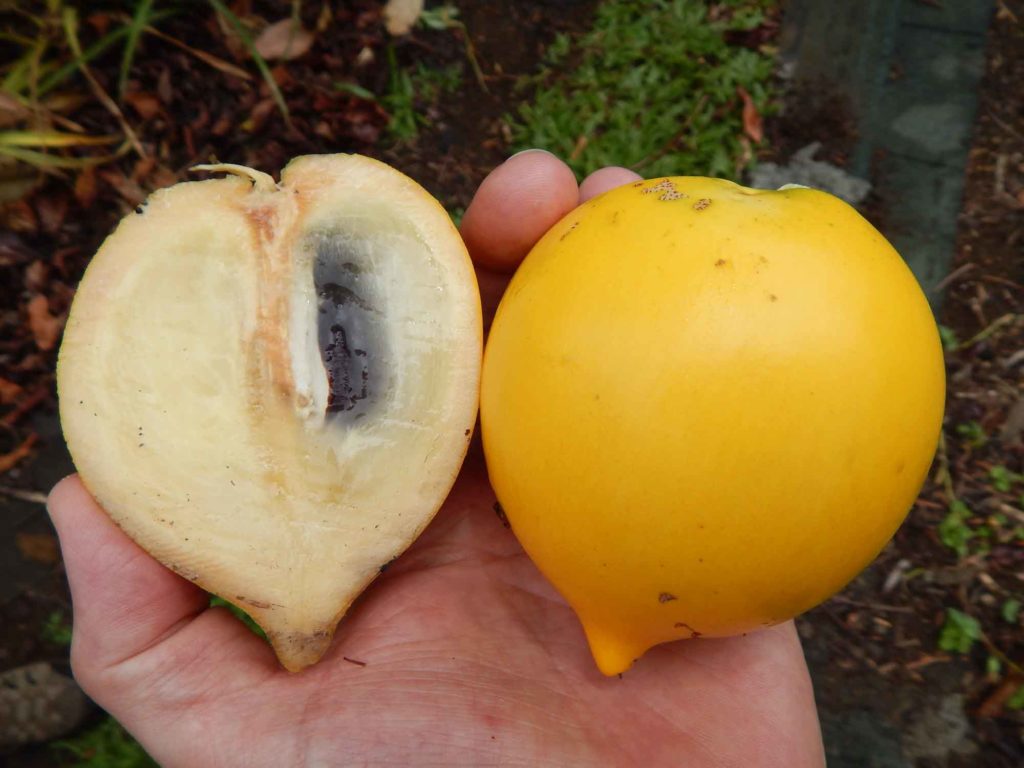
Abiu
Abiu is a tropical fruit native to the Amazon in Colombia, Brazil, Venezuela and Peru.
But it has traveled far and wide, and is a popular fruit in Hawaii.
It is also called yellow star apple or caimitt.
It is a highly popular Trinidadian fruit for its sweet and creamy flavor profile.
However, it is also rich in vitamins and minerals like vitamin C, riboflavin, iron, thiamin, calcium and niacin.
When ripe, the abiu fruit is slightly yellow on the outside. It has a white creamy flesh that you can easily scoop out and eat like a custard.
Abiu is also made into milkshakes, smoothies and ice cream, and you can find it all year-round as it is one of the most popular Trinidadian fruits.
Gru gru beff
Gru gru beff is essentially the fruit of a palm tree that’s native to African and South American countries.
It is also cultivated in other tropical areas like Trinidad and Tobago. In other areas it is known as banga.
It takes some good skills to harvest gru gru beff from its tree, especially because there are sharp thorns around it.
But once you remove the fruit from the palm tree, you’ll see a cluster of small, red, nut-like shells that are are hard to break as a coconut.
It’s so hard there is a rock band that wanted to explain just how hard their music was so the band name is called Bangaseed.
Inside them, you’ll find a white pulp that’s sweet to eat and a big, black seed.
Although banga can be eaten raw, most locals remove the extract from the pulp to make what they call a banga soup or stew.
‘Barbadine /Giant Granadilla
Also called the giant granadilla because of its humongous size, it is the largest passionfruit in the world.
Barbadine is a fruit in Trinidad that comes from an herbaceous vine called passiflora quadrangularis.
It can actually grow up to 15 meters.
The fruit itself can grow up to a foot long. It is rich in vitamins and minerals including vitamin C, phosphorus, iron, vitamin B3 and calcium.
Barbadine is available on the island from July to October where you can buy it from many local stores.
When the fruit is ripe, it smells similar to melons or strawberries. The pulp can taste a bit sweet and sour that the same time.
Barbadine is one of those tropical fruits that can be eaten raw or added to a salad or even made into a juice or cocktail.
It is common to find it in a giant granadilla punch.
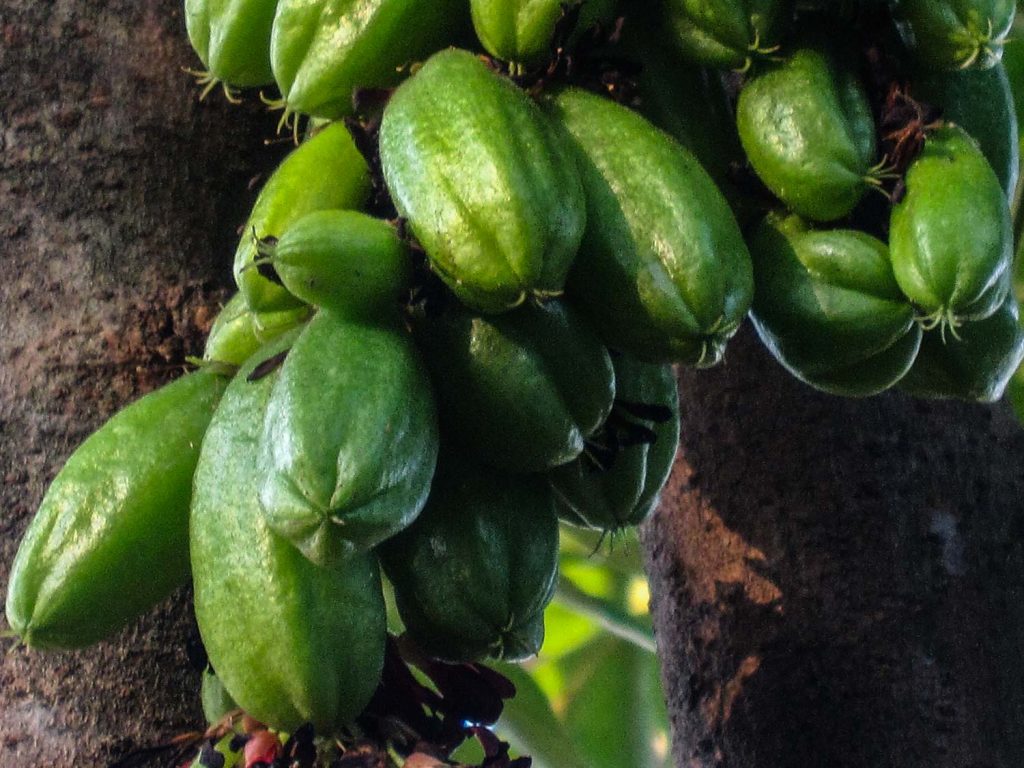
Bilimbi
Native to Asian countries, bilimbi is now widely cultivated in Caribbean countries like Trinidad and Tobago.
This Trinidadian fruit is closely related to carambola, aka five fingers or star fruit.
But it has a more acidic taste, which is why it’s used in cooking different dishes on the island.
Also known as cornichon, the bilimbi fruit can be eaten raw or dipped with salt where it can taste very sour.
It is also used in different preparations like pickles and relishes.
Bilimbi can also be added to different dishes as its acidic component and it’s also made into juices and even jams.
It’s a very popular Costa Rican fruit there bilimbi is used in relish, that is very common in a casado. It is originally from South East Asia and is a popular Cambodian fruit.
‘Chataigne / Breadnut
One of the most distinct Trinidadian fruits on the island is chataigne.
It is from the same family as breadfruit and jackfruit and a similar size.
It can also be referred to as breadnut in Jamaica, Maya Nut or Capomo nut in other countries and katahar in Guyana.
And although it’s called breadnut, it is actually a fruit. The tough exterior must be peeled and then the white flesh removed from the seed.
It’s a very healthy fruit, high in fiber, calcium and folic acid.
It is common to find it in curry dishes or boiled, which can take up to 90 minutes. An Instant Pot pressure cooker makes it much faster.
‘Chalta
This fruit in Trinidad traces its roots back to India and other parts of Asia.
It is also called elephant apple because it’s commonly fed to these gentle giants.
But chalta found its way to Trinidad and Tobago through Indian migrants who introduced the tree and fruit to the island.
Chalta comes from a large tree that can reach up to 15 meters. It also has relateively large flowers and eventually, fruits that can reach up to 12 centimeters in diameter.
Chalta ripens in October and you’ll see it being sold in a lot of markets in Trinidad.
It is also used in different Indian dishes like jellies, chutneys and jams because of its bitter-sour taste.
Chinee Tambran
Also called Chinese tamarind or Spanish tamarind, this Trinidadian fruit traces its origins back to Africa.
Chinee tambran looks like a green plum on the outside.
But once you open the fruit, you’ll see a brown pulp that’s almost similar to your traditional tamarind.
Chinee tambran isn’t exactly like your typical tropical fruit, but it’s very tasty once you get used to its sweet and sour flavor combination.
Aside from being eaten raw, some locals also turn the chine tambran’s fruit into jams and chutneys.
‘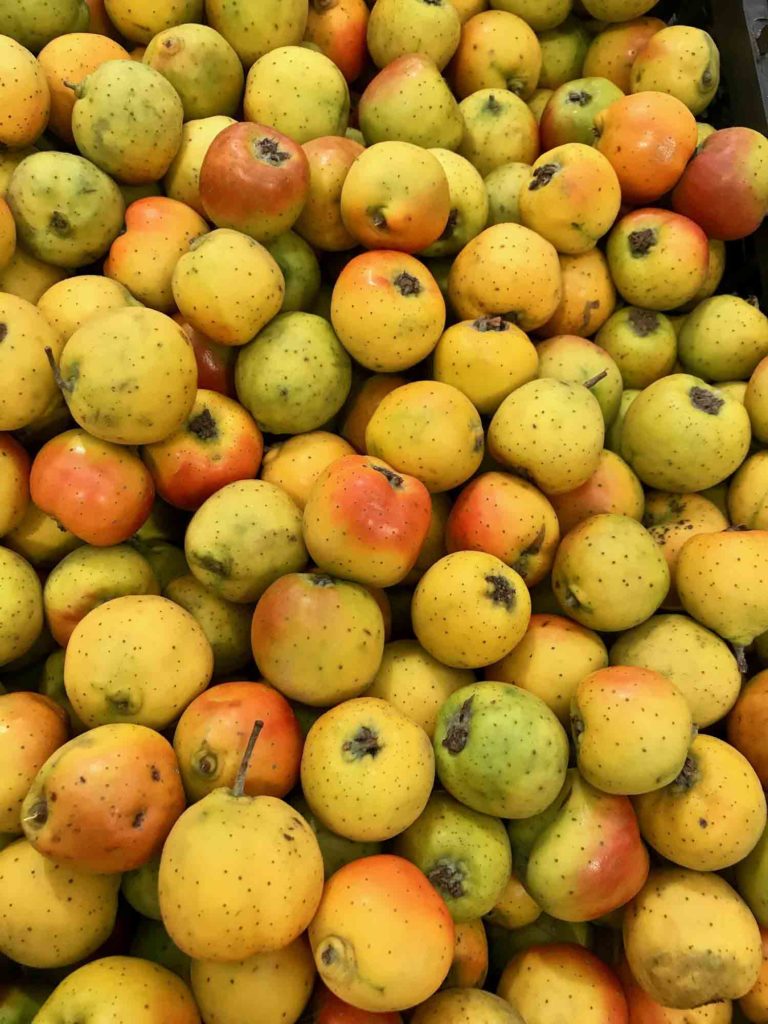
Chenet
You’ll hear different names for this fruit around the Caribbean.
It’s called guineps in Jamaica, ackee in Barbados, talpa jocote in Puerto Rico and genepa in the Dominican Republic.
But this fruit in Trinidad is called chenet, which is popular for its sweet, sour and tangy flavors.
The chenet tree can grow up to 30 meters high and when its fruit looks like a small lime on the outside with its green skin.
But once you open it, you’ll see an almost orange pulp that resembles a lychee.
It is a very popular local fruit, especially during the summer because of its refreshing taste.
This is why it’s deemed one of the best Trinidadian fruits.
Fat Pork
Fat pork is a fruit in Trinidad that’s native to the sandy areas of Guyana where it’s also called fat poke.
This fruit grows from the Chyrsobalanus icaco tree that grows up to 6 meters tall and is also very common in Barbados.
It bears small, pale pink fruits that are known as drupes because of their thick skin and soft flesh with seeds.
Fat pork is sweet and spongy, which is why locals in Trinidad love to eat it raw while others make it into jams and jellies.
The fruit can also be dried and treated like prunes where it is then stewed with sugar.
In Africa, the kernel of the fat pork seeds are turned into powder and used as part of “itsekiri,” which is a popular West African pepper soup mix.
‘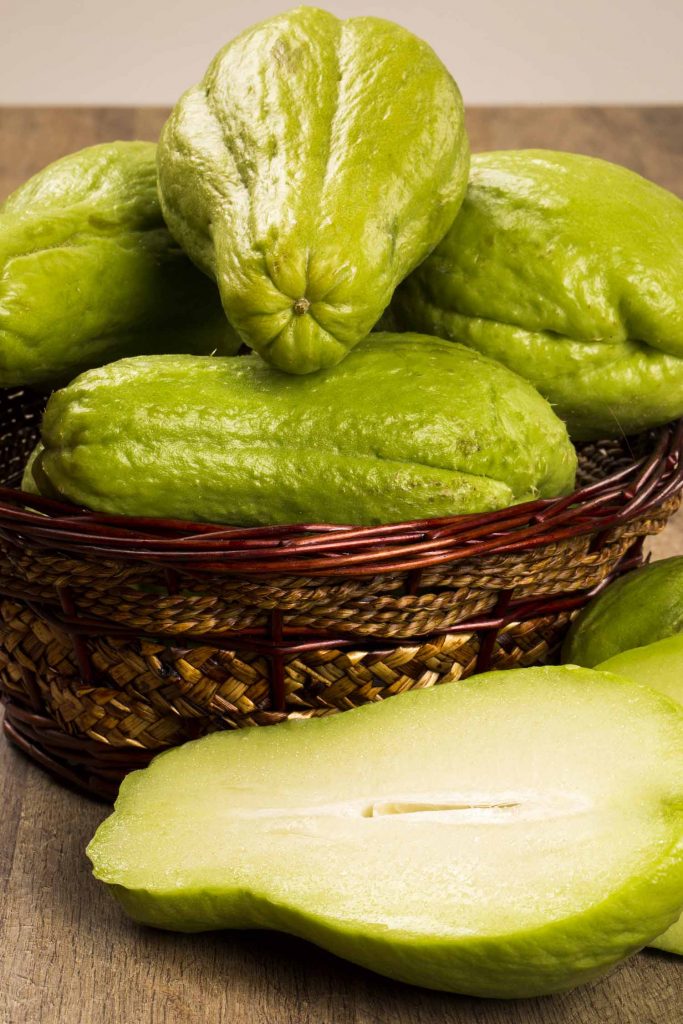
Chocho
Chocho is one of those Trinidadian fruits that will instantly capture your interest because of its weird appearance with its small spikes and odd shape.
In fact, chocho or more commonly known as chayote isn’t anything like your typical tropical fruit.
It’s actually treated as a vegetable in most countries where it’s cultivated.
Chocho is a pear-shaped green fruit with indentations and tiny spikes.
You can’t eat the skin because it’s very hard and tart. And peeling it can be a challenge because the fruit can be starchy and slippery.
But once you get past the peel, you can see a soft, green flesh with a big seed in the middle. Chocho is rarely eaten raw.
It’ usually cooked like a squash together with other vegetables because it absorbs flavor well.
Raw chocho is sometimes added to salsas and salads after being marinated with lime juice to remove its tart texture.
‘Cocorite
Cocorite is a fruit in Trinidad that comes from the maripa palm, and it’s the national fruit of Trinidad and Tobago.
The maripa palm can grow as tall as 35 meters and it bears a yellow oblong fruit that’s called cocorite in Trinidad, cusi in Bolivia, inayuga in Peru and rikre in Brazil.
The pulp and kernel of the cocorite fruit contains an edibleoil that has oleic aid and lauric acid, which is used by locals for different preparations.
The variety in Brazil is also used as a source of salt.
‘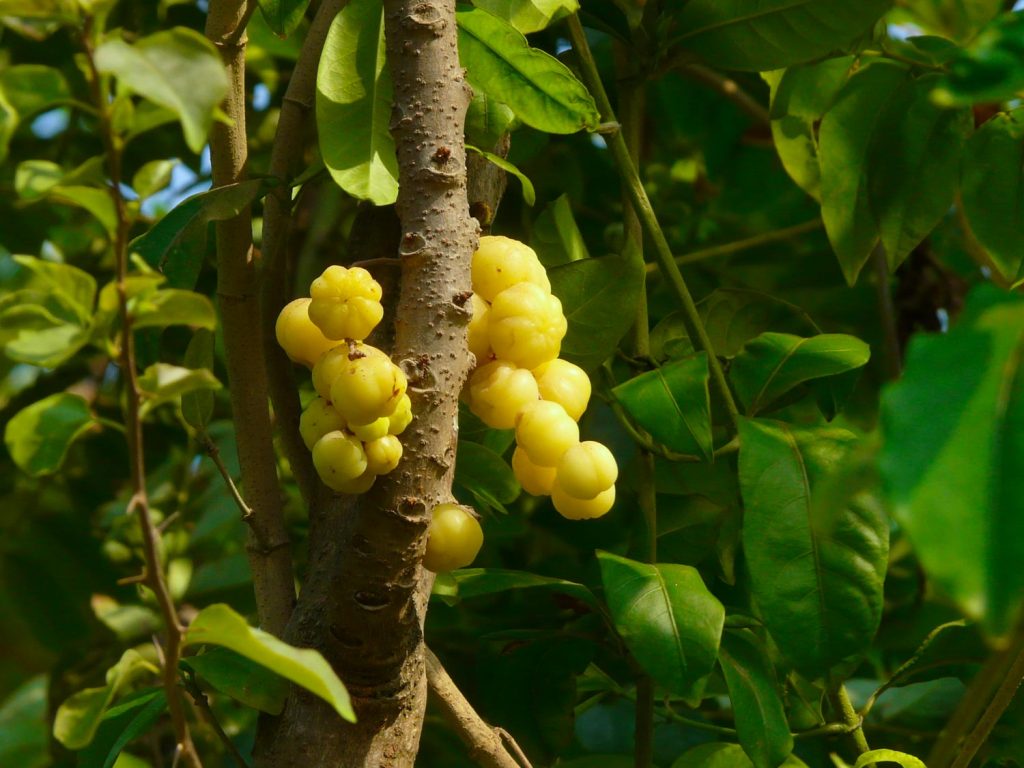
Sour Cherry
Sour cherries look like a slightly bigger version of green grapes and the flesh resembles that of lychees.
This Trinidadian fruit is also known as gooseberry in some countries. And called jimbilin or otaheite gooseberry in Jamaica. It’s also a Thai fruit called star gooseberry.
The actual fruit isn’t actually anything like the traditional gooseberry except for its tartness and sourness.
The gooseberry fruit can be eaten raw. But it’s usually cooked with ginger, sugar and other spices to make a stew in Trinidad.
Governor’s Plum
Native to Africa and Asia, governor’s plum is the fruit of the flacourtia indica plant that’s widely grown as a Trinidadian fruit for its sweet flavor.
It is also called Madagascar plum, Batoko plum, Indian plum, Jamaican plum and Rhodesia plum in other countries.
However, it’s just known as the governor’s plum in Trinidad.
Locals usually consume the plum raw because the flesh is already sweet and creamy.
But the governor’s plum can also be used in different dishes and other parts of the tree like its bark and leaves are used for medicinal purposes.
‘Cowa aka Jackfruit
I’m not going to lie. Jackfruit was a very confusing fruit for me in Trinidad as some people call it cowa, other people call it chataigne.
My understanding is chataigne is breadnut (see above) and cowa is jackfruit.
Both Trinidadian fruit are from the same family. And so maybe that’s why I received conflicting naming of the same fruit.
It’s actually hard to miss it because of its attractive aroma and humongous size.
The cowa tree belongs to the breadfruit, fig and mulberry family and it is native to Malaysia and Southern India. It’s also a common Vietnam fruit, Laos fruit, and is known as nangka fruit in Bali.
Since it is well-suited in tropical climates, jackfruit is also now widely grown in the Caribbean including Trinidad.
Jackfruit is considered the largest fruit in the world where it can weigh as much as 55 kilograms and grow up to 90 centimeters in length.
It is also considered one of the most versatile fruits because it can be eaten raw when it’s fully ripe.
Vegans around the world love this “vegetable meat” that appears in meatless “pulled pork” dishes.
When it’s young where it can be cooked into different dishes. Its juice is also one of the sweetest that you can find anywhere in the world.
In Trinidad, jackfruit is eaten raw or incorporated into juices, ice creams, smoothies and even jams.
The young jackfruit flesh is also cooked into one of the island’s most famous dishes, the Trinidadian-style coconut jackfruit curry.
‘Lychee
Belonging to the soapberry family, the lychee is closely similar to the native tropical fruit rambutan.
Although it has no spikes and the pulp is a lot sweeter.
Lychee trees were originally grown in China, but it has since been cultivated in tropical areas including Trinidad and Tobago.
It looks similar to guinep and is sometimes called chiny guinep in the Caribbean.
The fruit itself is very popular because of its very sweet flesh that blends well with just about any flavor profile.
So aside from being eaten raw, lychees are also made into ice creams, milkshakes, smoothies, jams and other desserts.
‘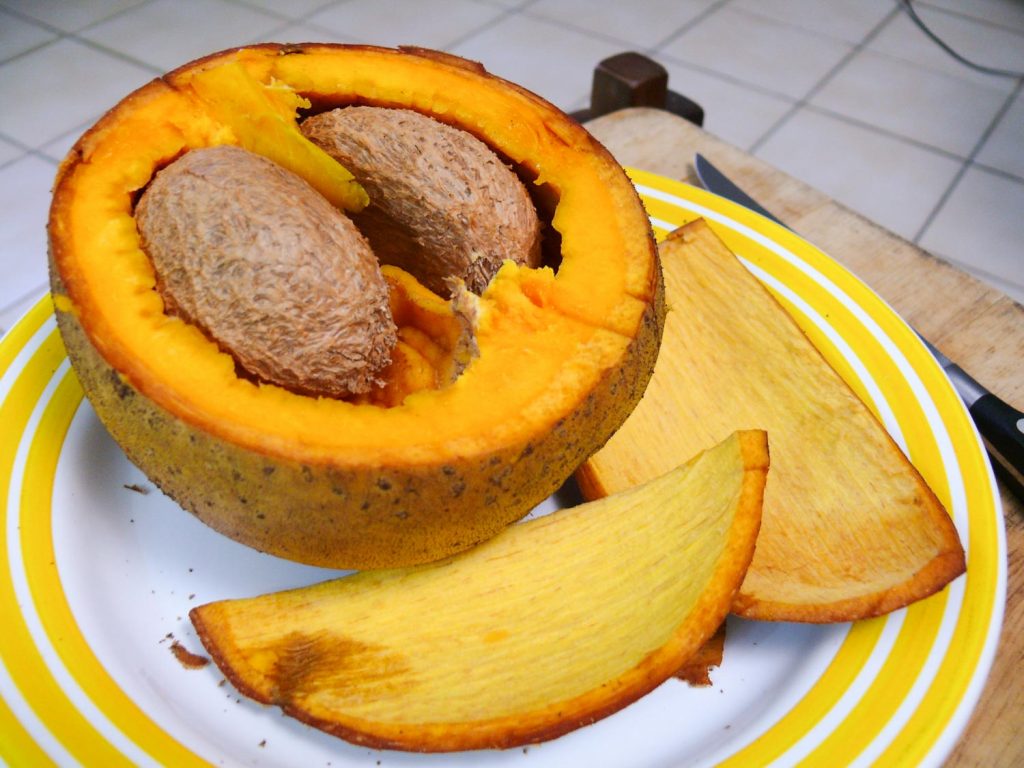
Mammee Apple
Also called the South American apricot, the mammee apple comes from the Mammea Americana evergreen tree, which bears fruit that’s similar to the mangosteen.
It’s common in Latin American and is one of the most popular fruits in Nicaragua.
The tree itself is referred as the “yellow mamey” to differentiate it from the similar-looking Pouteria sapota or “red mamey.”
The mammee apple is actually a type of berry that looks old from the outside because of its brown and rough skin.
But when you open a fully ripe fruit, you’ll see a yellow flesh that tastes very sweet. However, textures can vary from crispy to tender depending on the ripenes of the fruit.
The mammee apple is traditionally eaten raw in Trinidad, but some locals also make it into a jam since it resembles an apricot.
Monkey Apple
Native to South America, the Caribbean and Florida, monkey apple is a fruit in Trinidad that’s a childhood snack.
It is found throughout Latin America, known as soncoya, sincuya, and cabeza de negro.
It is and in the same family as the soursop and cherimoya (annona purpurea).
But children tend to like its sticky flesh that’s sweet.
Adults might not feel the same way about eating this fruit raw because of its unique texture.
‘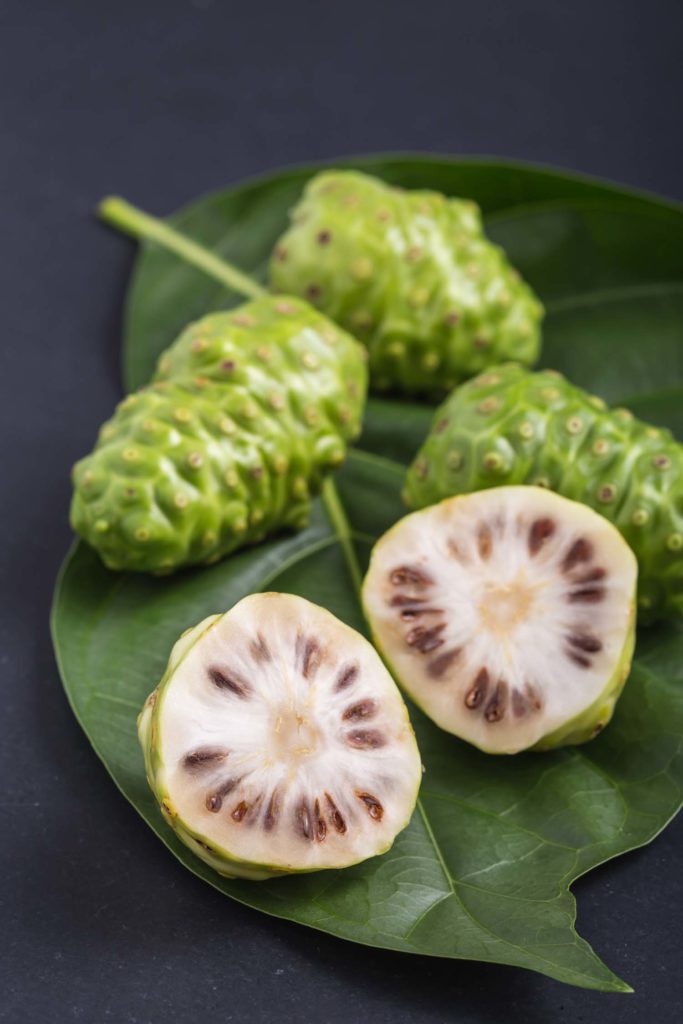
Noni
Noni was once referred to as the fruit of starvation because it was only eaten by indigenous people during famines.
This is because noni is almost inedible when it’s raw due to its very pungent smell and bitter taste that people compare to rotten cheese.
But noni is also considered one of the best Trinidadian fruits because of its health benefits.
It is considered a healing fruit now and is widely used in juice drinks, powders (like this one) or capsules and self-care and cosmetic products.
But because of its rotten cheese-like taste, noni is mostly processed into a that can be used for juices and smoothies.
The noni fruit looks a bit odd with its peculiar shape and small eyelets.
But when you open the fruit, you’ll see a white pulp with small red seeds.
‘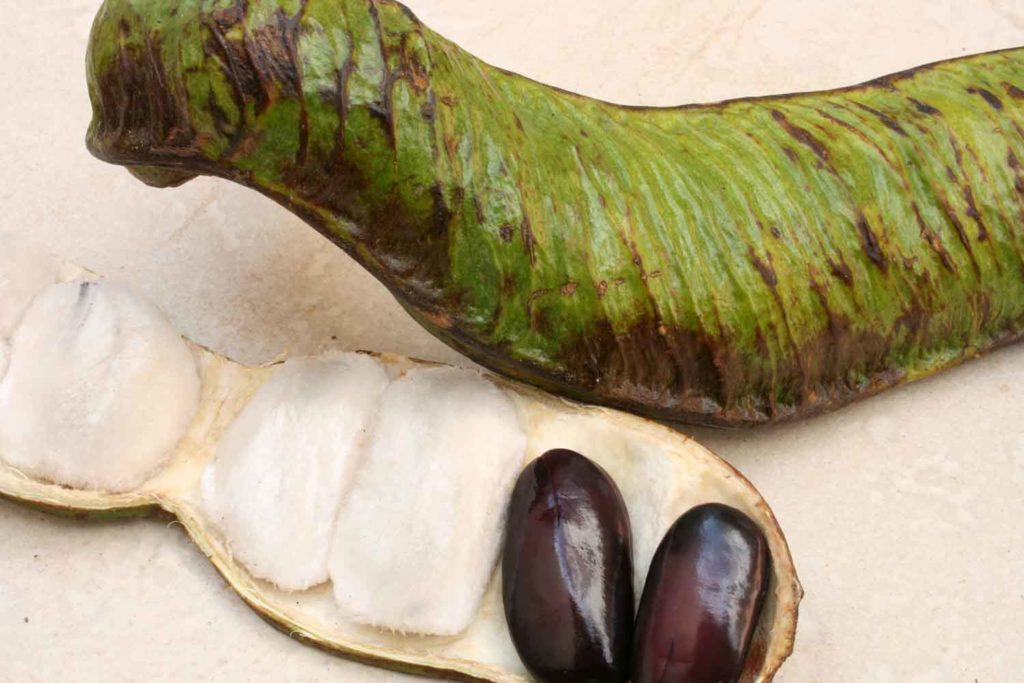
Padoo / Pois Doux
Padoo looks like a bigger version of a vanilla bean.
But it’s actually the fruit of a legume called inga feuilleei that produces what is called the ice cream bean because of its sweet, white pulp that tastes similarly to vanilla ice cream.
It is a common fruit in South America called guaba or inga. I first had it in Ecuador and on the trees I mistook it for giant tamarind.
Pois doux means sweetpea in English. Padoo is usually eaten raw in Trinidad.
But in other countries, you’ll see its seeds roasted and sold outside the cinema.
It is also sometimes treated as a vegetable and added to various dishes.
‘Peewah
Another member of the palm family is peewah. It is the fruit of bactris gasipaes that is originally from Central and South America.
Also called peach palm, the tree is actually grown mainly for the heart of palm and its trunk.
But the peewah fruit has also become a favorite fruit in Trinidad because of its sweet and nutritious pulp.
However you cannot eat it raw.
You’ll need to cook the fruit for up to five hours to really make it tender enough to eat.
Penny Piece / Canistel
More popularly known as the egg fruit or cupcake fruit because of its shape and bright yellow color. Some people also call it canistel.
Penny piece is the fruit of the Pouteria campechiana tree that’s native to South America and Asia.
It is a cousin to lucuma (Pouteria lucuma) which is a common Peru fruit also known as egg fruit and also very closely related to sapotes and abiu.
The fruit is also called yellow sapote in some areas. It has a yellow, creamy pulp that can be eaten raw because of its sweet taste.
Its soft texture is comparable to a hard-boiled egg yolk. Sounds a bit odd but you just need to try it.
Penny piece can also be made into a jam, marmalade, pancake, shake and even as custard for ice cream and other desserts.
There is even a popular milkshake that’s aptly named the “eggfruit nog” because of its main ingredient, the penny piece.
‘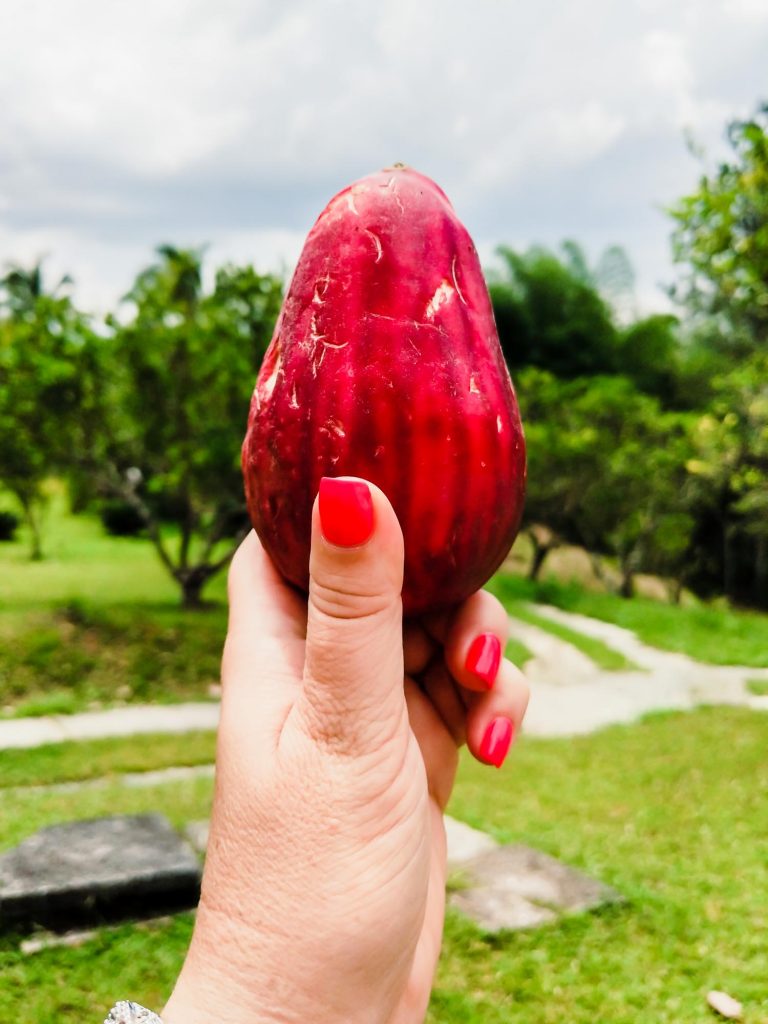
Pommerac
Pommerac is one of those tropical fruits that you don’t want to miss trying when on the island of Trinidad.
Although native to the Asian countries of Vietnam, Malaysia and Indonesia, this fruit has been cultivated in the Caribbean for its favorable weather conditions.
It’s commonly known as rose apple in some countries and otaheite apple or mountain apple in Jamaica.
The fruit itself has a dark red color and almost mushroom-like shape.
It can also be eaten like an apple. The skin and flesh also resembles an apple with its white, cotton-like texture.
This is why it’s also called mountain apple or water apple.
Pommerac is also very healthy since it has a high water content and contains vitamin C, calories and carbohydrates.
This fruit in Trinidad is traditionally eaten raw with some rock salt.
But it can also be enjoyed as a jam, jelly, pickle and even as part of a stew.
‘Rambutan
Rambutan may not be the most attractive fruit on this list, but it definitely makes up for taste what it lacks in appearance.
This Trinidadian fruit comes from the rambutan tree, which is native to Southeast Asia. It is closely related to lychees, mamoncillo and longan.
Although it is not as prolific as other fruit in Trinidad and Tobago, it does grow here as well as in Cuba and Central America.
The rambutan fruit is oval with a single seed. When fully ripe, the fruit becomes bright red with long spikes that resemble hairs surrounding the skin.
But once you get past that, a white and almost translucent pulp is on the inside covering a huge seed.
Locals usually eat rambutan raw because it’s a great snack that you can munch on, especially during the summer.
Rambutan can also be made into a fruit juice, shake, ice cream and even cocktails because of its sweet flavor profile.
In Asia, the pulp it also added to curries and other local dishes.
West Indian Cherry
Also called as wild crepe myrtle, acerola cherry and Barbados cherry, this South American cherry is known for its health benefits.
It is an excellent source of vitamin C, A, B1, B2 and B3, bioflavonoids and carotenoids, not to mention its excellent antioxidant properties.
The West Indian cherry has a bright red color, but it’s a bit bigger than your typical cherry.
The fruit itself, which is a drupe can be eaten raw because it is sweet and creamy.
In fact, this Trinidadian fruit can be made into baby food, aside from being processed for juices and pulps.
‘Zaboca
Finally, there’s zaboca or more popularly known as avocado. It is not indigenous to Trinidad and Tobago.
This Trinidadian fruit is touted for its heathy fats and different vitamins and minerals.
But for locals in Trinidad, zaboca is essentially a pear-shaped fruit that can be eaten raw because of its sweet and creamy taste or added into salads, shakes, smoothies and ice creams.
Which one of these fruit in Trinidad and Tobago do you want to try first?
Pin it: Trinidad Fruits
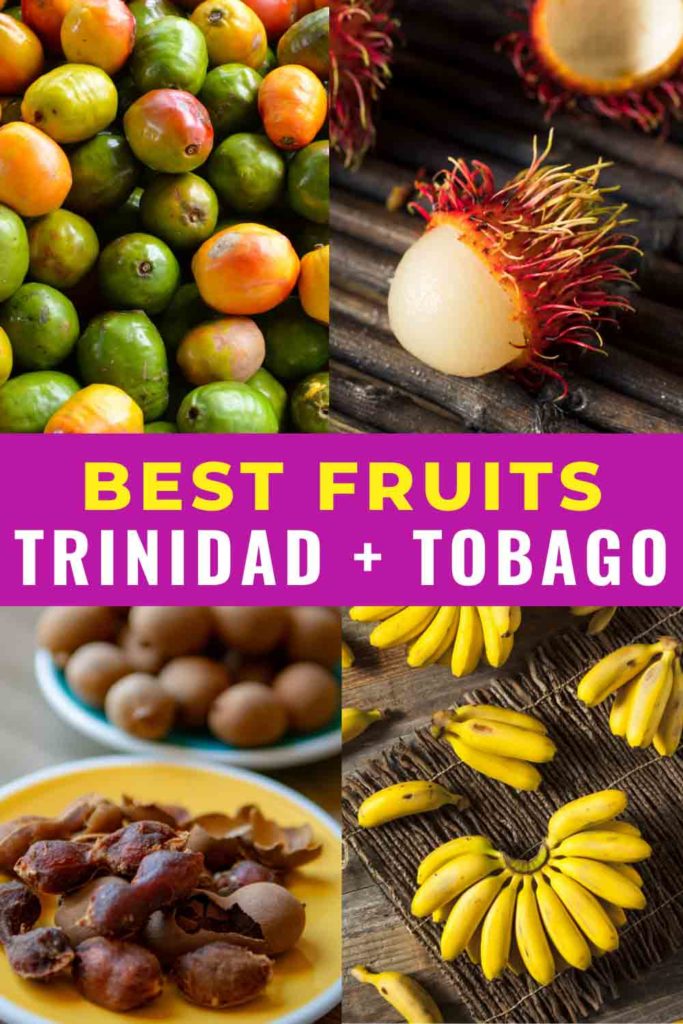
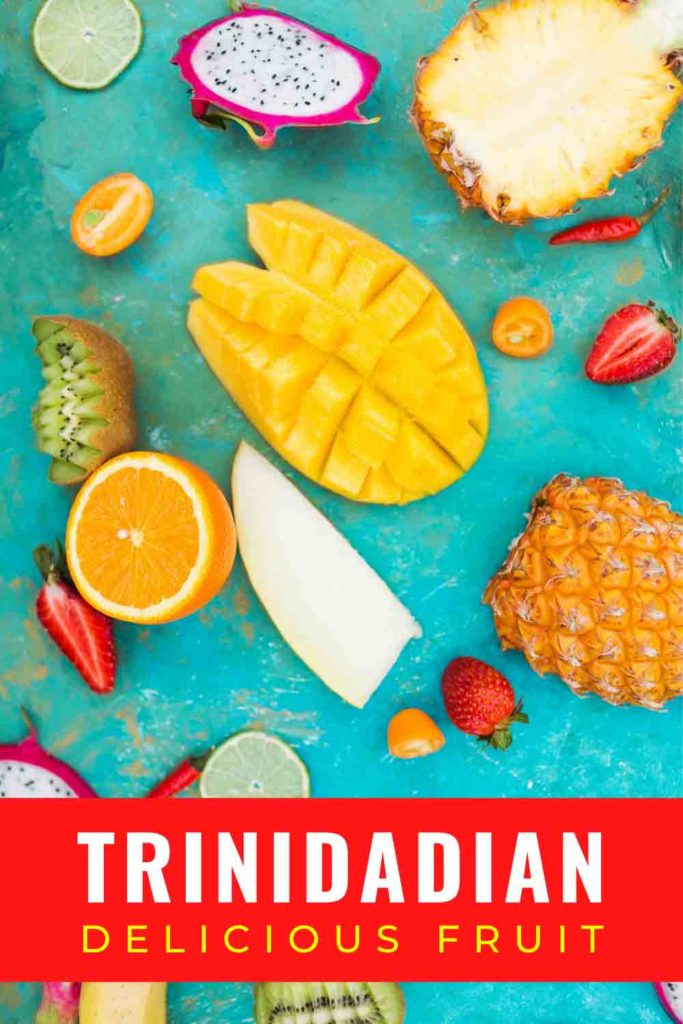
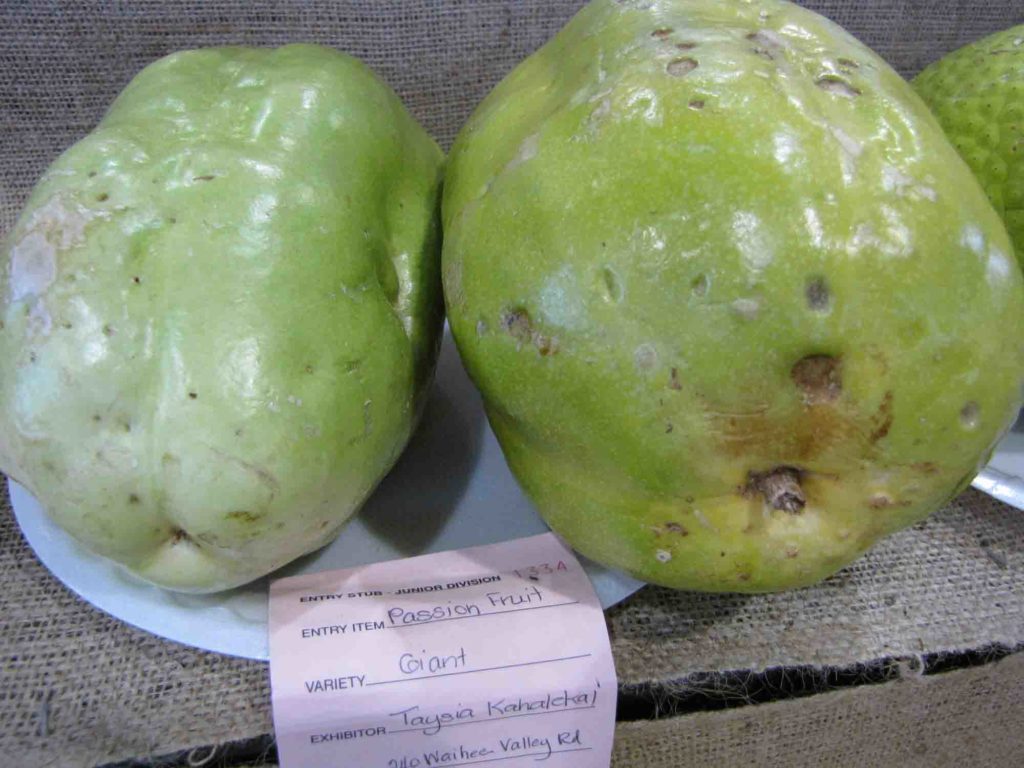
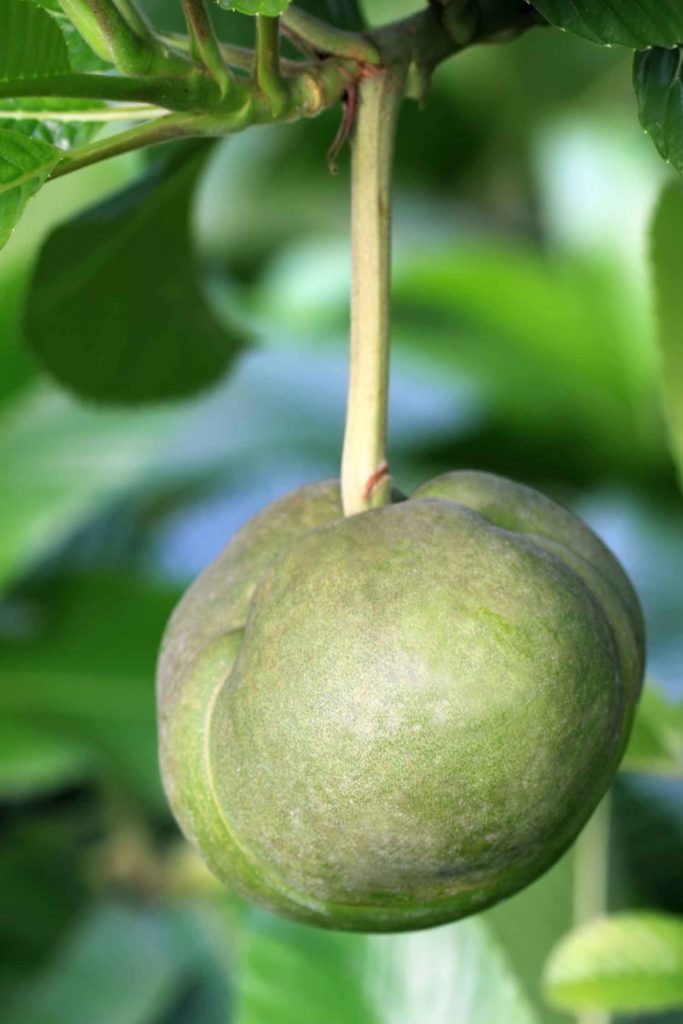
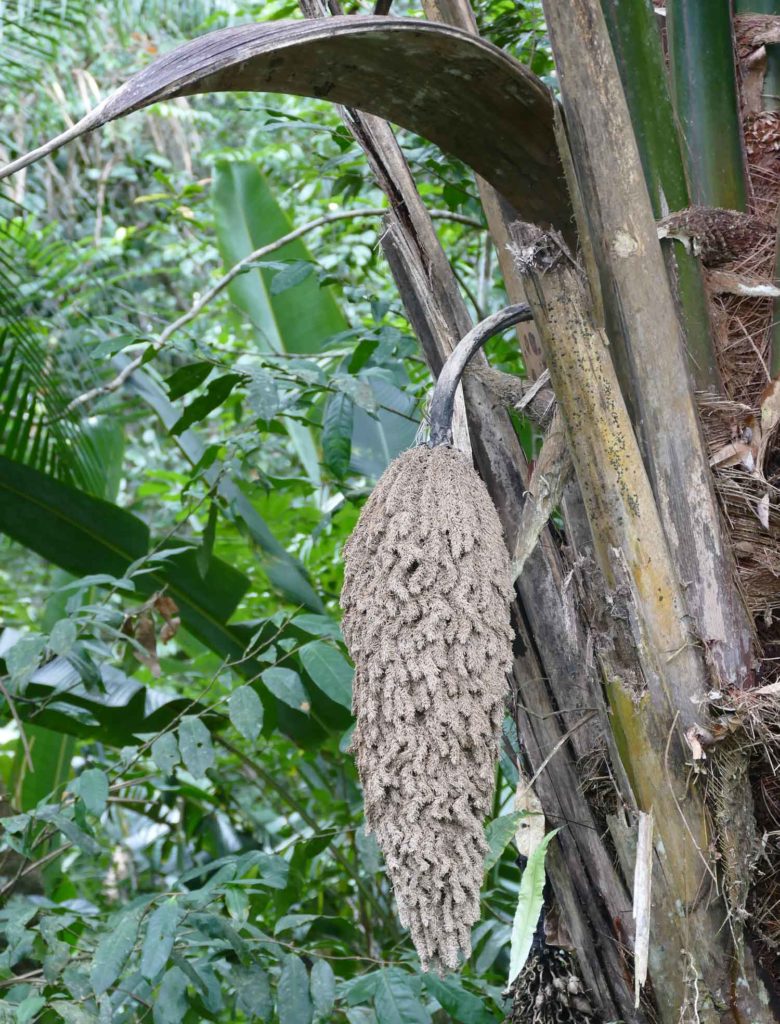
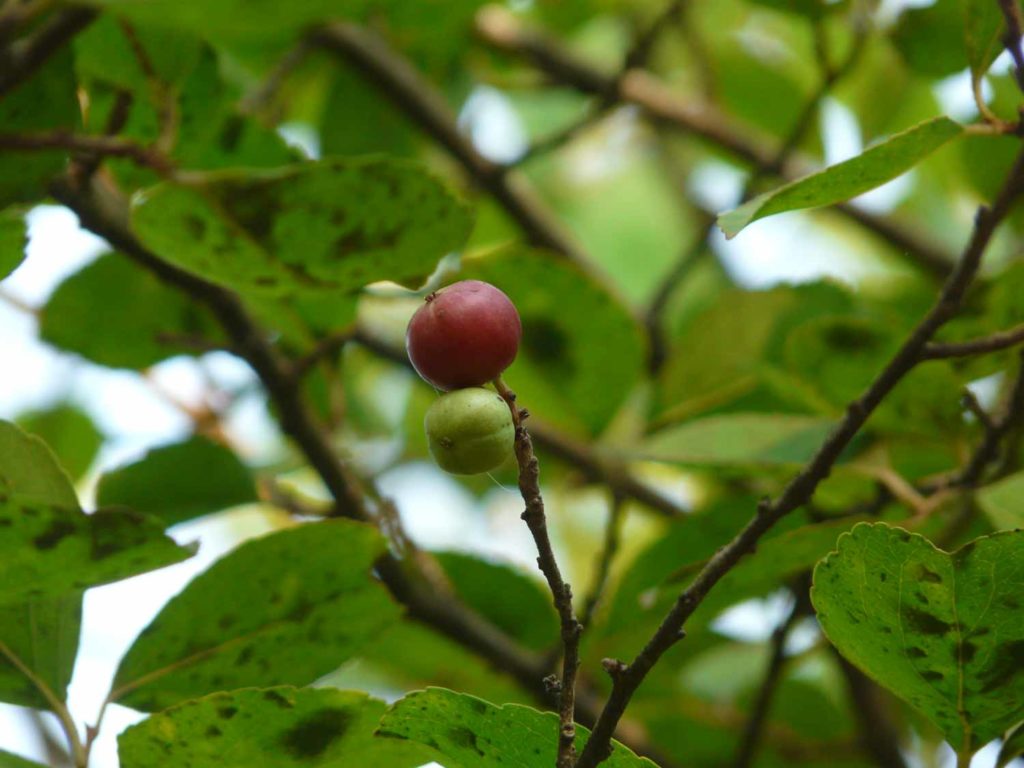
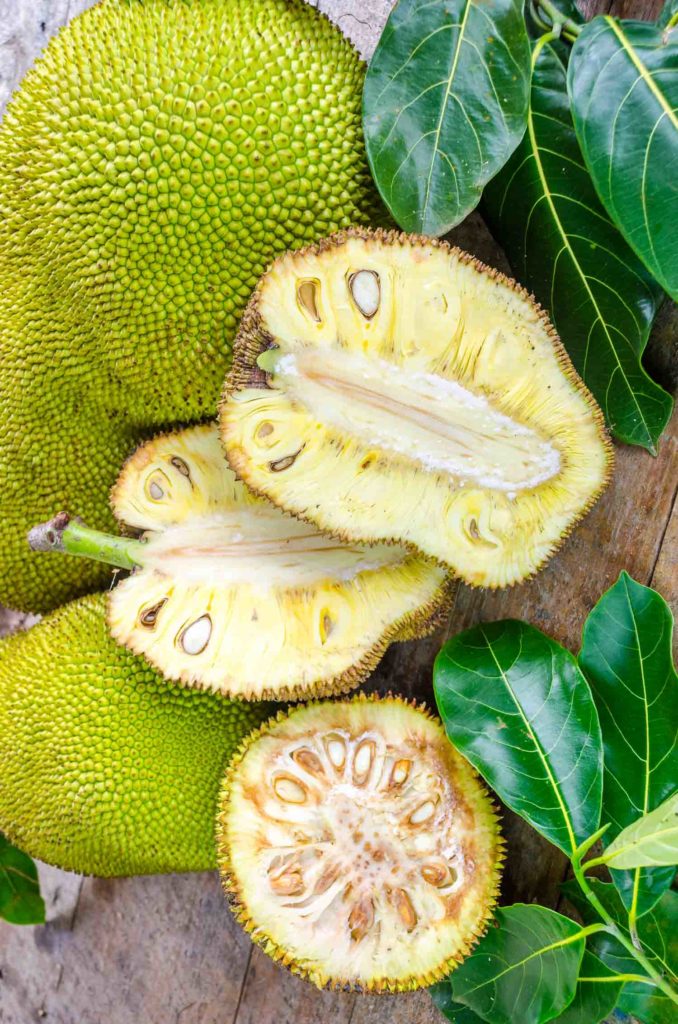
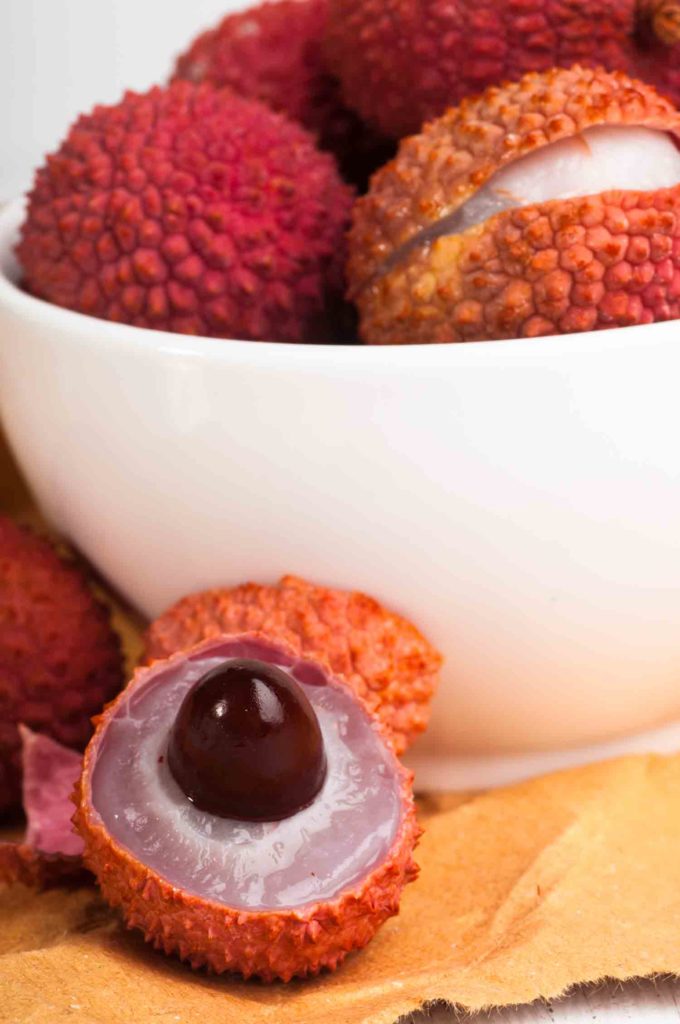
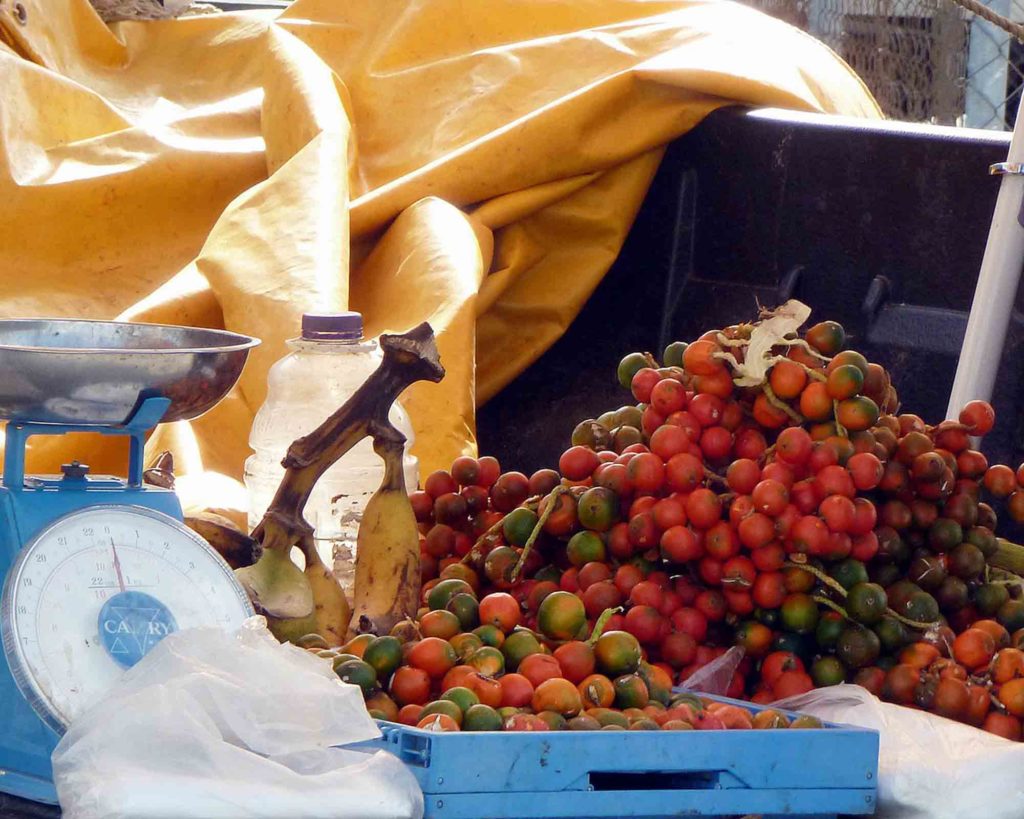
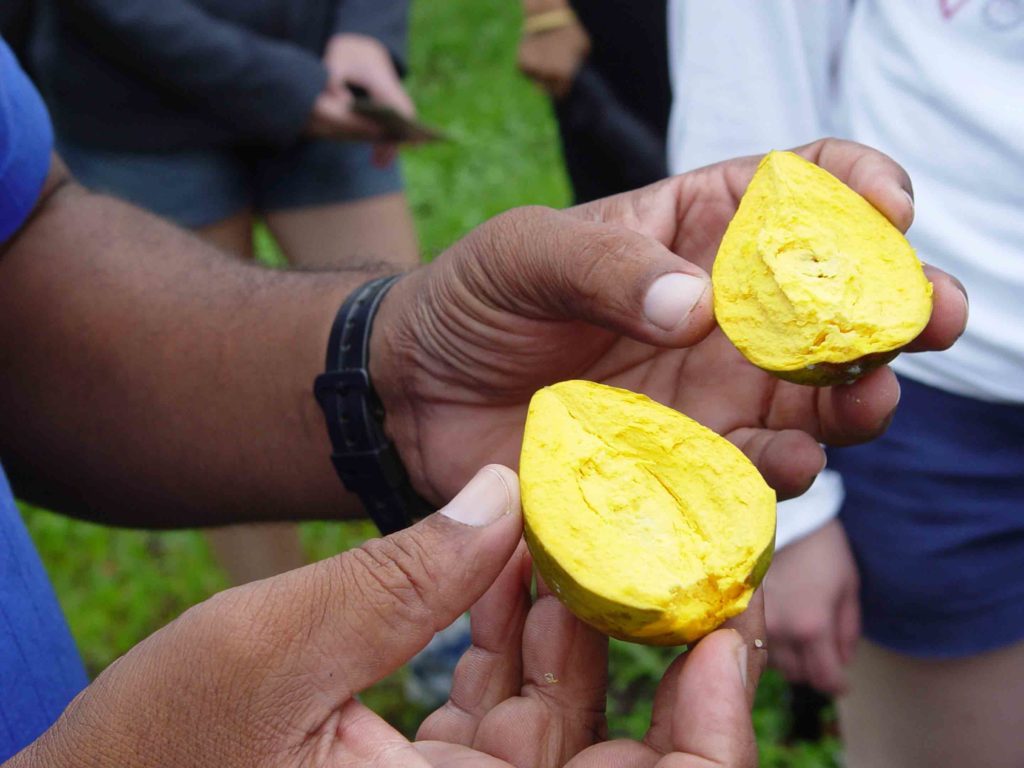
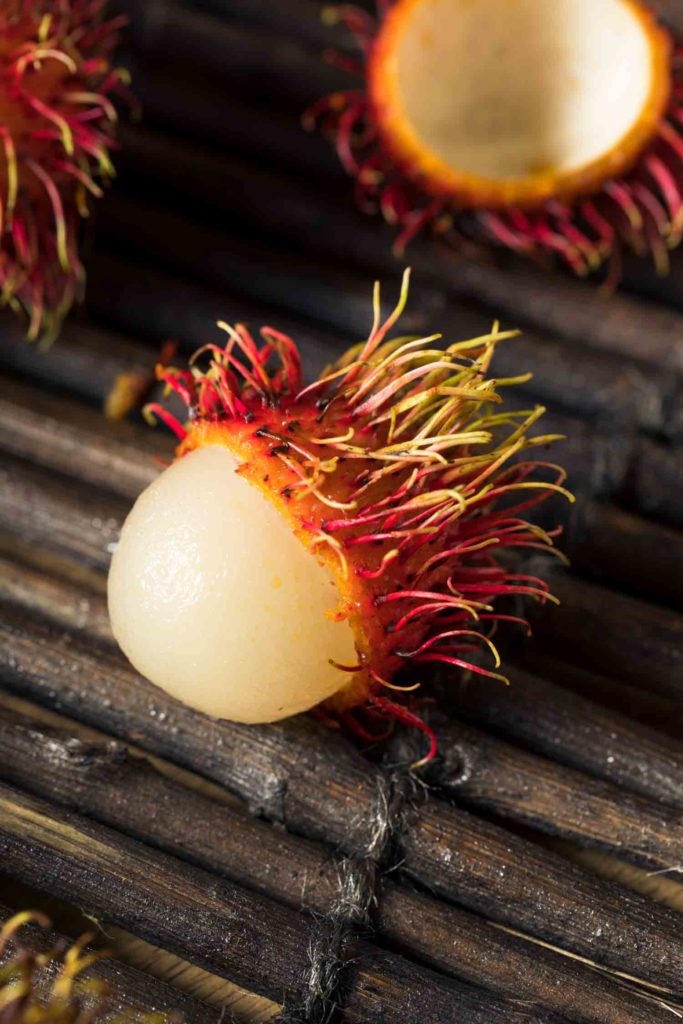
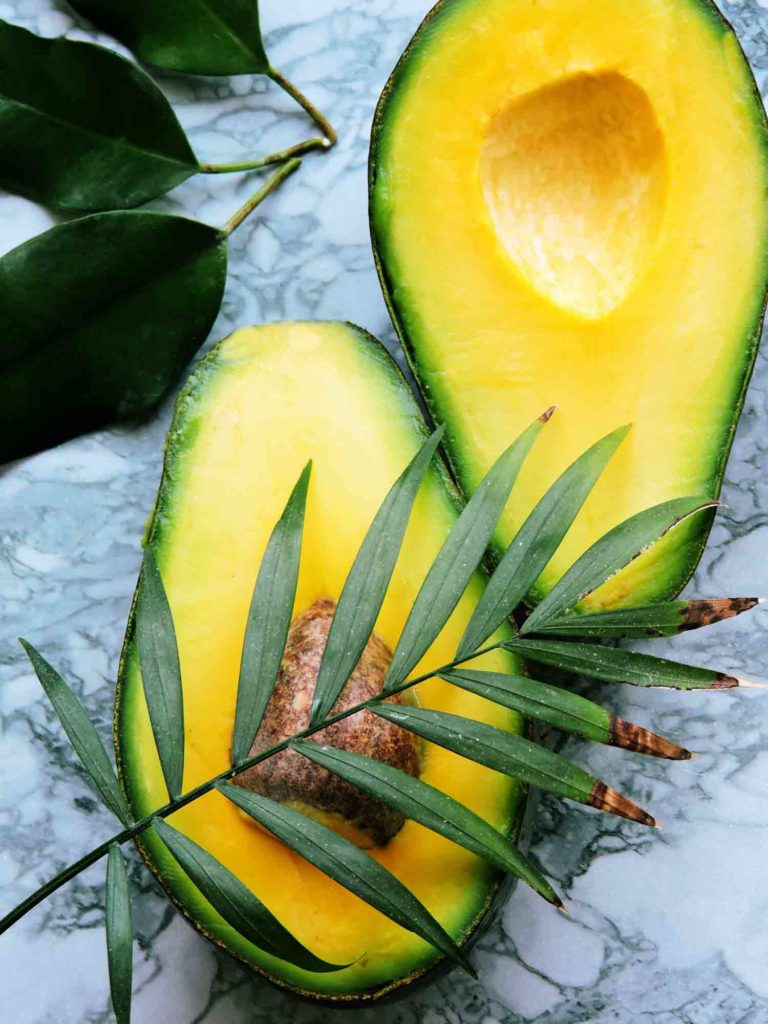
Peewah also called peach palm, the one I recognized in the picture shown is ready for eating after it is boiled for
about 50 to 55 minutes CERTAINLY NON 5 hr.
I am 69 years old ,my wife and I love peewah.
It is getting scarce now and quite expensive in Trinidad.
I would like to get a few plants and advice on growing them
Thank you for this, I was told 5 hours which I thought was a long time for such a small fruit. I have changed this in the article and I appreciate you commenting.
Do you know where i can get mangosteen to buy?
If you have any Caribbean stores around that would be a good place to start.